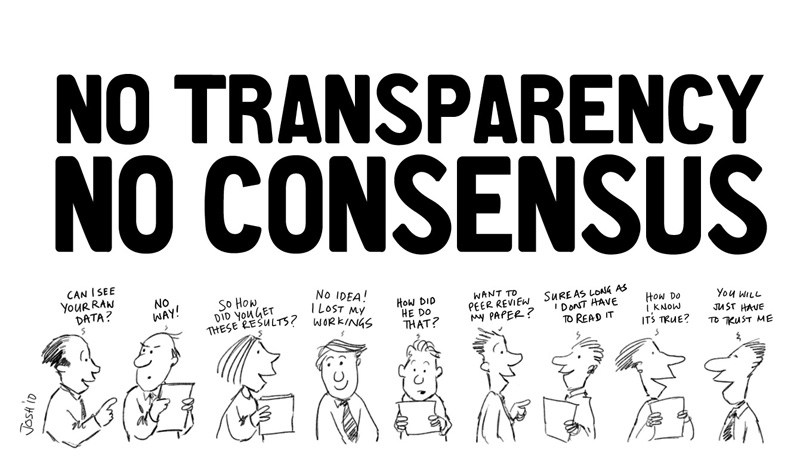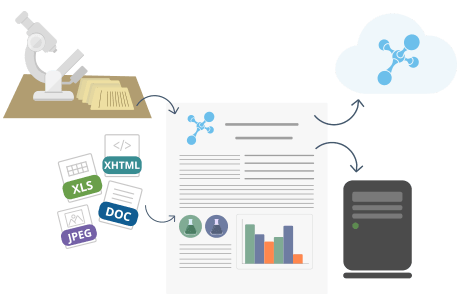Discussing data integrity means ultimately discussing the quality of science. Contrary to many other fields, academic science has developed its own “quality control” system. This system is based on journals’ reviewers. These reviewers are the barrier between a paper being accepted or rejected for publication. In addition, between a set of data being considered as true or not.

Source: http://cartoonsbyjosh.co.uk/
Originally, a reviewer’s purpose was to have a scientist that could repeat the experiments presented and validate the results. This ideology has been widely distorted. Now a reviewer is just someone that must assess the theoretical validity of a paper in less time. Ultimately they lack the proper technical tools for the job. Nevertheless, the anonymous revision of scientists’ work by other scientists has been heavily criticized. The absence of a method to validate pre- and post published data is now an issue of concern among the scientific community.
This limitation has given origin to several post-publication review channels. This includes anonymous ones, such as pubpeer, or public, like the one offered by ScienceOpen. Ultimately, they bring to the scientific community a new way to comment and discuss published data. Furthermore, Retraction Watch has now become one of the websites to follow when someone wants to get a grip on what is really happening in terms of scientific misconduct.
As well as peer review, there are also other channels of being open in science, such as data repositories. An example is figshare. Here, you can upload files and raw data in any format and easily share with fellow scientists.
It is a time where reviewers or scientists, that repeat others’ experiments, do not have any budget, time or glory. Thus it is crucial to find a better way to record data and share the knowledge with the scientists. They are either lab members, external collaborators or scientists following up a publication.
It is exactly in proper data documentation that a digital lab notebook, in particularly labfolder, is a must-have tool in all the labs.
You store your labfolder data in either the Cloud or local server. So you will never have the problem of having your lab notebook blown into a manure pit. Furthermore, you have a centralized system that does not allow scientists to remove data. This means you will never have to retract a paper because of missing lab notebooks.
If you look around your lab, you will notice that you produce 99.9% of the data digitally but your team is still using a paper and pen to record it. Even worse, your scientists are printing digital data and sticking it to a paper when they will continue to need to the digital version for presentations, meetings or papers.

So the question is: why be bound to a paper system that slows your research, increases error and it is dependent on several external factors? Factors such as handwriting, printers and general knowledge about Good Laboratory Practices?
With labfolder, you will experience an innovative and easy way to record your data. Our platform will help you standardize GLP in your entire lab. By offering tools like Search & Filter you will easily find the data you want regardless of the year it was generated and the person who did it. The platform also offers a full audit trail. This means the lab notebook will never go missing and you can retrieve your work whenever and wherever you need it.
Altogether, labfolder helps you protect your data from external (human or not) errors. You can properly document and store your data and better avoid paper retractions in the future.
Thinking of switching paper for digital? Navigating through all the ELN options can be tricky, so check out our Comprehensive Buyers’ guide to the Electronic Lab Notebook to discern which would be best for your needs.